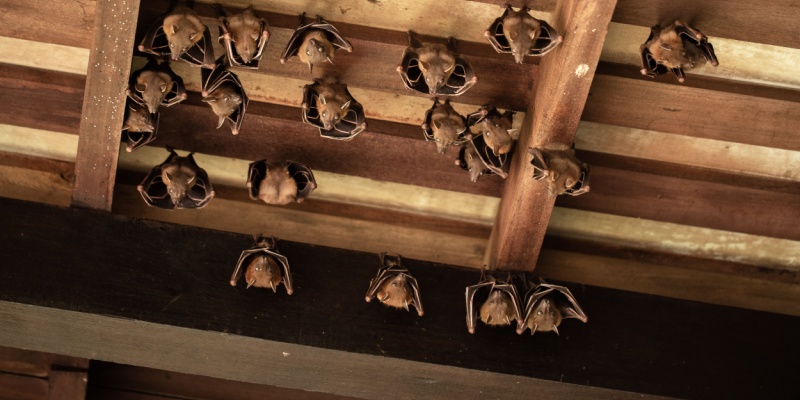Discovering bats in your attic can be unsettling. These nocturnal creatures often seek shelter in attics, especially during the colder months. Recognizing the signs of a bat infestation early can help you address the issue before it becomes a significant problem. Here’s how to determine if you have bats in your attic:
1. Listen for Noises
Bats are nocturnal and typically active during the night. Listen for high-pitched squeaks, rustling, or flapping noises coming from your attic. These sounds are usually more noticeable at dusk or dawn when bats are leaving or returning to the roost.
2. Look for Droppings
Bat droppings, or guano, are a common sign of an infestation. Guano is small, dark, and crumbly, resembling mouse droppings but with a shiny appearance due to insect exoskeletons. You might find these droppings near entry points, windowsills, or scattered around the attic.
3. Check for Stains and Odors
Bat urine and droppings can cause stains on walls, ceilings, and insulation. Over time, these stains might become noticeable. Additionally, a strong, musty odor is often associated with bat infestations. This smell results from accumulated guano and urine and can permeate the attic and surrounding areas.
4. Inspect for Entry Points
Bats can enter your home through very small openings. Inspect your attic and roof for potential entry points, such as gaps in the eaves, vents, chimneys, and loose shingles. Bats only need a half-inch gap to gain access to your attic.
5. Spotting Bats
If you see bats flying around your home at dusk, they might be roosting in your attic. Watching their flight patterns can help you identify entry and exit points. Bats usually leave their roost at dusk to feed on insects and return at dawn.
6. Look for Grease Marks
As bats squeeze through tight entry points, their bodies leave greasy or oily marks around these openings. These marks result from the natural oils in their fur and can help identify frequently used entry points.
7. Presence of Dead Bats
Finding dead bats inside or around your home is another indicator of an infestation. While it’s not common to find many dead bats, even one or two can signal a larger problem.
Why It’s Important to Address a Bat Infestation
Bats can carry diseases, such as rabies, and their droppings can harbor fungus that causes histoplasmosis, a respiratory illness. Moreover, accumulated guano can damage insulation and other materials in your attic. Addressing a bat infestation promptly helps mitigate these health risks and prevents further damage to your home.
Professional Bat Removal
If you suspect you have bats in your attic, it’s crucial to contact a professional pest control service. Experts can safely and humanely remove bats from your home. They will:
- Conduct a thorough inspection to confirm the presence of bats.
- Identify and seal entry points to prevent re-entry.
- Use exclusion devices that allow bats to leave but not return.
- Offer advice on preventing future infestations.
Preventive Measures
To avoid future bat infestations, consider implementing the following measures:
- Regularly inspect and maintain your roof and attic to ensure there are no gaps or openings.
- Install screens on vents and chimneys to block potential entry points.
- Keep trees trimmed away from the house to reduce bat access to the roof.
- Use outdoor lighting strategically, as bright lights can deter bats from roosting nearby.
By understanding the signs of a bat infestation and taking proactive steps, you can protect your home from these nocturnal visitors. If you suspect bats have taken up residence in your attic, don’t hesitate to seek professional help to ensure a safe and effective removal process.
